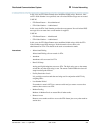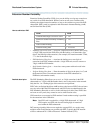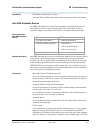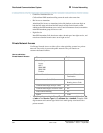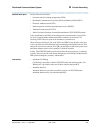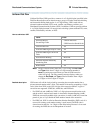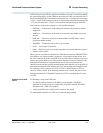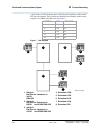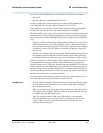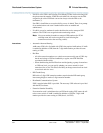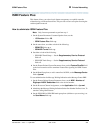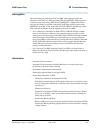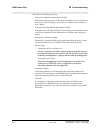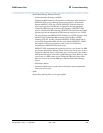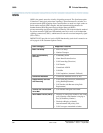
Distributed Communications System
353
Administration for Network Connectivity
555-233-504 — Issue 1 — April 2000 CID: 77730
B Private Networking
If a user at extension 41000 wants to call extension 61234, there are two choices:
• Dial 61234
• Dial the AAR access code followed by 222-1234
If 61234 is dialed, the system recognizes 61 as a remote UDP, determines the
associated RNX (222), and uses AAR to route the call to 222-1234.
If the AAR access code and 222-1234 are dialed, the system finds the route pattern
for RNX 222 and routes the call to the switch associated with that RNX.
Whenever UDP is used to route a call to another switch, the correct digit deletion and
insertion must be specified within the route pattern so that the receiving switch gets
digits in the format it expects. DEFINITY ECS can be configured in several different
ways.
• If AAR is available on the receiving switch, Subnet Trunking can be used to insert
the AAR feature access code on the originating switch or digit insertion may be
used to insert it on the receiving switch. The receiving switch then uses AAR digit
conversion to convert 222 with 7 digits to an extension by deleting 3 digits and
inserting a 6.
• If AAR is not available on the receiving switch, Subnet Trunking must be used on
the originating switch to delete the 222 and insert the digit 6 at the beginning of
the extension number so that the receiving switch can continue to route correctly.
If the user at extension 51234 on Switch C dials extension 61234, the call must first
go through Switch A before proceeding to Switch B. When 61234 is dialed, the
system recognizes 61 as a UDP code, determines the associated RNX (222), and uses
AAR to route the call. The AAR feature access code plus 222-1234 are outpulsed to
Switch A. Switch A then recognizes the RNX 222 as a remote switch and routes the
call to Switch B and extension 61234. This same type of call routing occurs when an
extension at Switch B calls an extension at Switch C.
If extension 61234 on Switch B calls extension 61235, the system recognizes 61 as a
local UDP code and routes the call directly to extension 61235.
Considerations • In North American network environments, extensions beginning with 0 may route
to an attendant. You are encouraged to use another number as the leading digit
when assigning extensions.
• When you call an extension on another switch, there may be a slight delay before
call-progress tones are applied. This delay is due to the trunk signaling necessary
to complete the call to the remote switch.
• When you select the option to look at the UDP table first, calls that might
otherwise terminate at a local extension route over the network. This is easily
reversed. When you remove the extensions from the UDP table, the local
extension can be dialed again.



